1. Louisiana
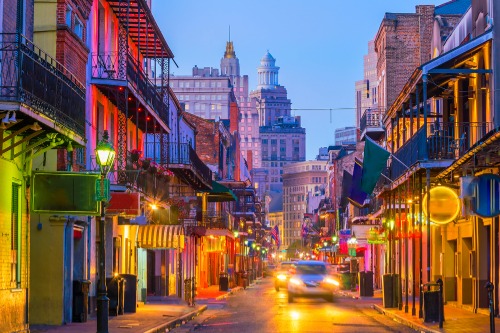
Louisiana’s population has been adversely affected by natural disasters, with Hurricane Ida in 2021 causing a 2% economic contraction. The state’s vulnerability to climate change-induced events has led to economic disruptions and population displacement. Additionally, the lack of employment is also leading people to abandon the state for better opportunities, according to the Pelican Institute. As these events become more frequent, many residents are relocating to areas perceived as safer and more stable. Louisiana’s dependency on oil and gas industries, combined with its susceptibility to flooding and hurricanes, has led many to seek refuge in states less affected by such natural disasters.
The ongoing challenges posed by natural disasters and the need for sustainable infrastructure have prompted many to seek more resilient environments. As climate change intensifies, Louisiana’s reputation for instability may continue to drive people out of the state unless major infrastructure upgrades are made to safeguard communities and the economy.
2. Illinois

Illinois has been facing a steady population decline, with a 0.4% decrease each year since 2014, and it reached a peak in 2023, Fox32 reports. Contributing factors include high taxes, economic instability, and a challenging job market. The state’s pension liabilities have further strained its financial health, prompting many residents to seek better opportunities elsewhere. Illinois’ heavy tax burden, combined with the state’s budget shortfalls, has created an environment where businesses are struggling to stay and residents are fleeing in search of lower costs of living.
The combination of fiscal challenges and a less favorable business environment has led to a significant outflow of residents, particularly to states offering more economic stability and lower living costs. Efforts to address Illinois’ financial issues are ongoing, but until there are significant reforms to ease the tax burden and improve public services, the state’s population loss is likely to continue.
3. West Virginia
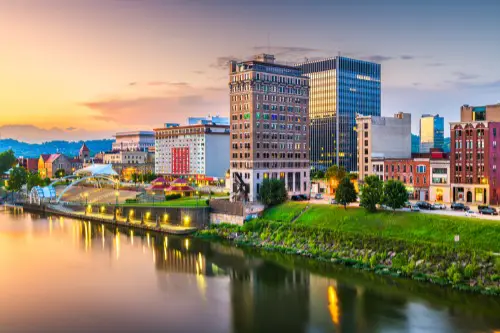
West Virginia’s economy, heavily reliant on coal, has faced significant challenges as the energy sector transitions to renewables, resulting in job losses. The state’s GDP shrank by about 3.7% in 2020, exacerbating economic woes. This economic downturn has led to a projected 3% population decrease by 2025, as residents seek better employment opportunities elsewhere. The decline of coal and other traditional industries has left the state scrambling to diversify its economy, but progress has been slow. As of now, they are experiencing a steady rise in migration, according to the West Virginia Center on Budget & Policy.
The decline in traditional industries and the need for economic diversification have prompted many to consider relocating to states with more robust and varied job markets. While the state is working to attract new industries, it still faces significant challenges in improving its business climate and providing the necessary opportunities for young professionals.
4. New York

New York has been grappling with a consistent population decline, with nearly 500,000 residents leaving over the past three years—a 6% decrease since 2020. This trend is primarily attributed to high living costs, particularly housing, and the allure of more affordable regions, the Financial Times explains. Additionally, the rise of remote work has enabled many to relocate without sacrificing career opportunities. As New York residents find it harder to stay in the city and surrounding areas, states like Florida and North Carolina have become attractive alternatives for those seeking better value for their money.
The state’s economic challenges, including high taxes and a competitive job market, have further contributed to this exodus. As residents seek better quality of life and financial relief, New York’s inability to address rising living costs, coupled with its dense population, leaves many feeling pressured to leave. The outmigration could continue if policies fail to make the state more affordable and business-friendly.
5. California

California continues to experience significant population loss, with over 250,000 residents departing in recent years. The high cost of living, especially housing, and burdensome taxes are major factors driving this trend. Notably, prominent figures, including Elon Musk, have relocated to states like Texas, highlighting the state’s challenges in retaining both residents and talent. As home prices and the cost of living continue to soar, many are finding it increasingly difficult to justify staying.
The state’s ongoing housing affordability crisis, coupled with stringent regulations, has made it difficult for residents to stay, the Los Angeles Times warns. Businesses are also fleeing to more tax-friendly states, which exacerbates the problem. As a result, many are seeking more business-friendly and affordable environments in other parts of the country. If California doesn’t take steps to ease its housing and business regulations, it could continue to see its population shrink in the years to come.
6. Mississippi

Mississippi has one of the highest poverty rates in the country, contributing to its slowly declining population. With only 22% of residents holding a bachelor’s degree, the state faces challenges in attracting and retaining a skilled workforce. Educational and job training programs are seen as essential to reversing this trend and improving economic prospects. As education levels in Mississippi lag behind the national average, many residents are moving to states with better access to higher education and more dynamic job markets.
The combination of economic hardship and limited educational opportunities has led many residents to seek better prospects in other states. Addressing these issues is crucial for the state’s future growth and stability, but without immediate reforms, Mississippi is likely to continue facing significant population loss in the coming years.
7. Connecticut
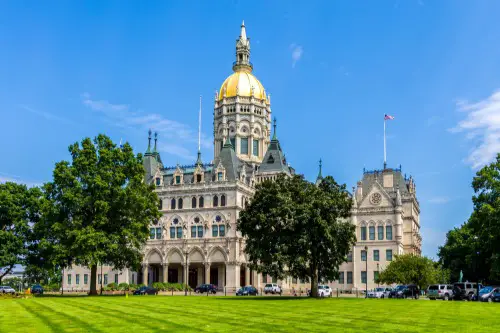
Connecticut faces an aging population and high living costs, leading to a shrinking labor force. The state’s high taxes and cost of living are often cited as deterrents to retaining and attracting talent. Urban planners suggest creating policies to reduce living costs and encourage business expansion to reverse this trend. With a tax structure that places a heavy burden on residents and businesses, Connecticut has become less attractive to young professionals, who are leaving for more affordable states with better job opportunities.
The outmigration of residents seeking more affordable and business-friendly environments has posed significant challenges for the state’s economy. If Connecticut is to turn this trend around, it will need to find ways to lower living costs, attract businesses, and provide incentives for people to stay in the state. Without these changes, the population decline could continue.
8. Maine
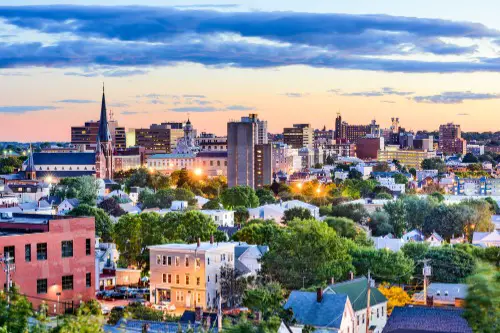
Maine’s population is aging rapidly, with residents aged 65 or older constituting 20% of the population. This demographic trend predicts a 1% population decrease by 2025. To combat this, policymakers are encouraged to attract young professionals and families with better job opportunities, education, and family-friendly policies. However, Maine’s rural nature and limited urbanization make it harder to retain younger generations who are seeking more urbanized environments with better access to jobs, cultural activities, and amenities.
The state’s aging demographic poses challenges for its workforce and economic growth. Efforts to rejuvenate the population through targeted policies and incentives are ongoing but require significant investment and commitment. Maine must address these challenges to maintain its economy and provide a sustainable future for its residents.
9. Michigan

Michigan’s manufacturing industry is declining, with a projected 2% population decrease by 2025. The state’s GDP fell by 4.6%, highlighting economic vulnerabilities. Transitioning to advanced manufacturing and investing in research and development are seen as keys to revitalizing the economy and halting the population loss. However, many residents, particularly younger professionals, are migrating to states with more dynamic economies and job opportunities in technology and finance.
The ongoing population shift reflects a need for broader economic diversification and a more competitive job market. As Michigan continues to adjust to the changing landscape, its ability to attract and retain talent will play a critical role in reversing this trend. The state must focus on innovation and education to keep its population stable and prosperous.
10. Ohio

Ohio has been experiencing a slow but steady population decline in recent years. The state saw a 0.2% decrease in population in 2024, which is significant given its large size. One of the primary reasons for this exodus is the lack of economic growth in key sectors like manufacturing and agriculture. Although Ohio has seen some revitalization in tech and healthcare, many residents are still seeking better job prospects elsewhere, particularly in more vibrant, fast-growing areas such as the Sun Belt states.
Additionally, Ohio’s weather and lack of robust urbanization in some areas contribute to the outmigration. Younger generations, in particular, are leaving for states that offer warmer climates, greater economic opportunity, and more dynamic lifestyles. As industries continue to shift away from traditional manufacturing, Ohio must diversify its economy further to reverse this trend and retain its residents, especially younger talent, who are more mobile than ever.
11. New Jersey

New Jersey has been facing a notable population decline, driven by high property taxes, cost of living, and economic stagnation. With its proximity to New York City, many New Jersey residents are leaving for more affordable states where they can enjoy a better quality of life without the sky-high costs of living associated with the northeast. Moreover, New Jersey’s tax structure remains one of the highest in the nation, which leads to a significant financial burden on residents.
The state’s economic performance has been mixed, and while it remains a hub for certain industries, such as pharmaceuticals, it has not kept up with the rapid economic growth seen in other parts of the country. The combination of high costs and a saturated job market in key sectors has prompted many people to seek out states like Florida, Texas, and North Carolina. If New Jersey wants to stem this outflow, it will need to find ways to reduce costs, improve job prospects, and become more attractive to families and young professionals alike.
12. Alaska
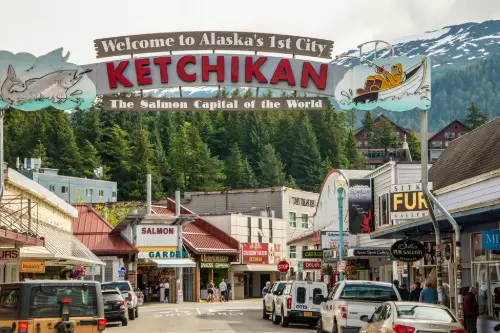
Alaska’s population has been on a steady decline for years, with a significant drop expected in 2025. High living costs, extreme weather conditions, and the state’s reliance on the oil industry have contributed to this trend. The decline in oil prices over the past decade has affected Alaska’s economy, leading to job losses and reduced economic activity. In addition, the cost of living in Alaska, particularly in terms of housing and utilities, is much higher than in most other states, making it less appealing for residents, especially younger people, who have the flexibility to move elsewhere.
The state has seen a steady migration to the lower 48 states, where warmer climates and lower living costs are drawing people in. While Alaska offers a unique lifestyle, its economic reliance on oil and the challenges posed by its remote location are making it harder for the state to retain its population. Without significant changes to diversify the economy and improve living conditions, Alaska may continue to face a population decline in the coming years.
13. Florida
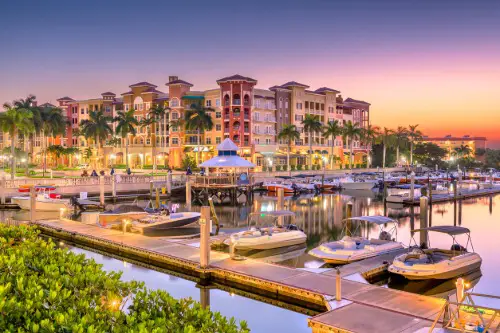
Florida has traditionally been a state of migration, but recent trends indicate that more people are leaving than ever before. The Sunshine State’s rapid population growth has led to increasing congestion, which has strained its infrastructure and housing markets. While many people are still drawn to Florida for its tax benefits and warm weather, the rising costs of living in major urban areas like Miami and Orlando have made the state less affordable for some. The influx of people seeking lower taxes has created more competition for housing, driving up prices and making it harder for long-time residents to stay.
In addition to housing costs, the state’s increasing vulnerability to hurricanes and flooding due to climate change has also led to fears about its future livability. As Florida faces more frequent storms and environmental risks, some residents are seeking refuge in other states perceived as safer and less vulnerable to natural disasters. The combination of overcrowded cities, rising living expenses, and environmental concerns could drive more people to relocate to other regions in the years ahead.
14. Arizona
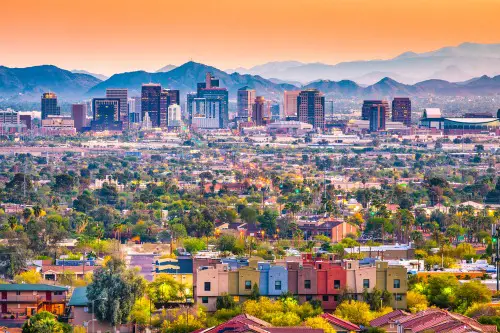
Arizona has experienced significant population growth over the past few decades, but in recent years, the state has seen an uptick in people leaving, especially from areas like Phoenix. The high temperatures in the summer months, combined with rapid urbanization and a lack of green space, have made living conditions in some cities less desirable for certain residents. Arizona’s growing housing market has also become less affordable, pushing many out of the state in search of better options in neighboring states such as Nevada and Texas. These factors contribute to a population shift, especially among younger individuals seeking better job prospects and more livable conditions.
Additionally, Arizona faces environmental concerns such as water scarcity, which has led to fears about the state’s long-term sustainability. As the state’s population continues to grow, these concerns may become more pronounced, causing residents to reconsider their future in the region. If Arizona cannot find solutions to these challenges, it could continue to lose residents to states with better environmental conditions, more affordable living, and a higher quality of life.
15. Nevada

Nevada has been a popular destination for people seeking a lower cost of living and tax advantages, but recently, it has seen an increase in people leaving. Rising housing prices and a growing sense of congestion in cities like Las Vegas have made it more difficult for residents to stay. As the state’s population continues to increase, many people are finding themselves priced out of the market and are moving to other states where housing is more affordable. Additionally, the state’s reliance on the tourism industry has left it vulnerable to economic instability during downturns, further prompting some residents to look for more stable environments.
In addition to economic pressures, Nevada’s extreme desert climate, with scorching summers and limited access to natural resources, has contributed to growing dissatisfaction among some of its residents. As more people move to states with more temperate climates, better job opportunities, and affordable housing, Nevada’s population growth may slow. Without addressing these economic and environmental challenges, the state may see a continued outmigration trend in the coming years.


